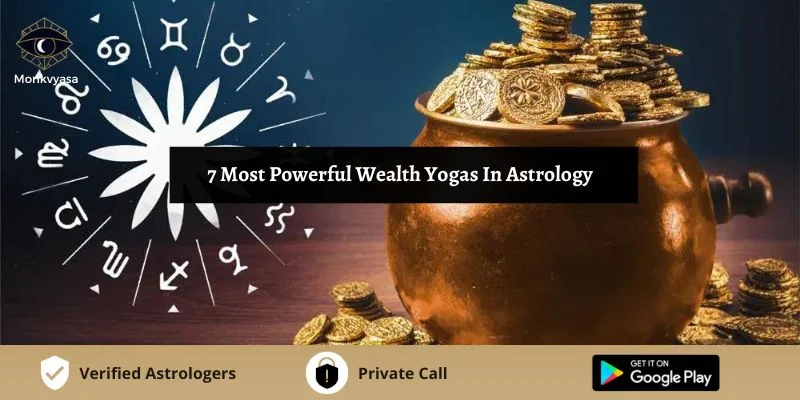

Many homeowners often forget about the staircase when planning their house, focusing more on other parts. They may not realize that the position of the staircase is important. A badly placed staircase can bring negative energy and reduce positive vibes in a house. That's why following Vastu tips for staircase is essential.
A well-designed and correctly positioned staircase can bring prosperity, good health, and peace of mind. So, it's important to consider Vastu principles for the staircase inside the house to invite positivity and abundance. Simple things like where the stairs are located, how visible they are, and where they start can make a big difference in bringing good energy into the home.
Why is it important to follow Vastu for the stairs?
Having a staircase inside the house is connected to the movement, and according to Vastu principles, any issues with its design or placement can disrupt the movements of the residents. This can significantly impact their health, well-being, and daily routine. Structural problems in the staircase design can even lead to severe accidents and drain the positive energy from the house, making the environment inconvenient.
On the other hand, a staircase that follows Vastu guidelines can promote a positive energy flow, leading to prosperity, happiness, and success for the homeowners and the entire family. Even if you are not a firm believer in Vastu, following these basic principles can contribute to an overall positive atmosphere in your home.
12 Tips for Vastu for Staircase Inside House
Staircase Direction As Per Staircase Vastu
According to Vastu principles, the best directions for stairs in your house are either south or west. These directions are believed to bring good health and prosperity. The stairs should start from the north and go towards the south or east to west. If there's not enough space, it's okay to have turns in other directions, as long as the general direction is correct.
Vastu for Staircase Orientation
The way the stairs in your staircase are designed can affect your physical health for a long time. That's why it's important to follow staircase Vastu rules for how the steps are arranged.
According to these rules, staircases should always turn in a clockwise direction as we go up. In simple words, when you use the stairs to go up, you should move from the north to the south or from the east to the west. Some Vastu experts believe that a staircase that turns anti-clockwise can affect your career growth.
Number of Steps in a Staircase
In a west-facing house or any other direction (east, north, or south), Vastu suggests that the staircase should have an odd number of steps, like 9, 15, or 21. Odd numbers are considered lucky and believed to bring good fortune and an abundance of good luck to the household. Additionally, it's advised that the number of steps should never end with a zero.
Vastu for Staircase for West or South Part of the House
For Vastu-compliant staircases, it is recommended to build them in the southwest, south, or west part of your home, regardless of whether your house faces east, north, or west. It is believed that building stairs at certain places, especially in the North-East direction, can cause financial loss to the owner. In the case of a south-facing house, the staircase can be constructed in the west or northwest, or south or southeast part of the house while adhering to Vastu principles.
Vastu for Staircase Positioning
According to Vastu for interior staircases, it is recommended to place all stairs along the side of the house. Avoid placing the staircase in the center or a location where it is highly visible to guests, as this may burden the house and deplete its positive energy. By placing the staircase on one side, you allow positive energy to flow freely without any obstructions. This arrangement is believed to create a more harmonious and balanced atmosphere in the house.
Vastu-recommended colors for the staircase
It's best to paint staircases in light and soft colors. You can choose gentle shades like beige, off-white, pastel pinks, yellows, or tints of blue to create a positive atmosphere in your home. However, if your staircase faces north, east, south, or west, it's essential to avoid using colors like black and red as they can bring negativity.
If you plan to have wallpaper near the staircase, pick a light and soft shade for a better effect.
Vastu Tips for Storage Under the Staircase
In addition to avoiding waste items, Vastu Shastra also advises against storing valuable belongings under the staircase. It is recommended to keep everyday items that do not hold significant value in that space.
By aligning the elements of a home according to Vastu principles, homeowners can facilitate the flow of radiant energy throughout all spaces, fostering a harmonious and positive living environment.
Vastu for Staircase Type
Spiral staircases may look attractive in design, but according to Vastu, having them inside the house is not recommended. Vastu suggests that they act like a corkscrew, draining the positive energy of the house. Additionally, spiral staircases are seen as unbalanced and irregular according to staircase Vastu, which can also impact the energy of the home in a negative way.
Vastu-recommended shape for the staircase
According to Vastu, square and rectangular staircases with bends at right angles are considered the best for both internal and external staircases. Staircases that have steep inclines or excessive height can make the user feel drained and tired every time they use them. Therefore, it is recommended to avoid spiral staircases for the same reason.
Space Around the Staircase
Living rooms are places where people come together to enjoy each other's company and have conversations. To maintain a positive and pleasant atmosphere, it is essential to keep the living room clutter-free. Vastu experts advise against having staircases in the living room, except if they are placed to the side. Staircases are considered disruptive structures that can drain the positive energy in the space, leading to an unfavorable impression both visually and physically.
Vastu rules for staircase decoration
As per Vastu guidelines, avoid decorating staircase walls with family photos, as it can lead to conflicts among family members and negatively impact their health. Instead, adorn the staircase walls with scenic pictures of blooming flowers, lush greenery, mountains, or abstract art. Place ceramic pots with plants underneath the staircase area for a positive vibe.
Be cautious not to hang a mirror in front of or under the stairs, as it may attract negative energy into the house through its reflection. Also, refrain from keeping a fountain or an aquarium under the staircase, as it is considered inauspicious.
Vastu for staircase Handrail
When choosing a handrail for a staircase, there are some Vastu tips to consider:
- For a staircase in the southwest direction of the home, the most Vastu-compatible handrail is one made of stone or marble.
- If the stairs are in the west direction of the home, opt for a metal handrail for a good staircase Vastu.
- If the stairs are located in the south and east directions of the flat or apartments, use a wooden handrail for good home Vastu.
- It's important to have a handrail for the staircase, as it not only adds to the aesthetics but also ensures safety. Staircases without handrails can be risky and should be avoided.
Vastu for staircase outside house
When constructing an external staircase, considering Vastu guidelines becomes important. The placement of the external staircase should align with the direction the house faces. Here are the ideal directions for an external staircase according to Vastu:
- For an east-facing house: The external staircase should be placed in the southeast direction.
- For a west-facing house or a south-facing house: The external staircase should be situated in the southwest direction.
- For a north-facing house: The external staircase should be placed in the northwest direction.
Following these Vastu recommendations for the external staircase's placement is believed to bring positive energy and harmony to the house.
Vastu for staircase: Key things to remember
- The steps' height must be from 4 inches to 7.75 inches, and the part you step on should be between 10 and 11.25 inches long.
- You can make stairs without railing inside the house, but keep in mind that the width of the stairs should be on the higher side.
- It is mandatory to have a railing on the stairs made of more than five stairs outside the house from the point of view of safety.
- It is better to have properly designed and constructed stairs to ensure safety and convenience.
Impact of Vastu defects on staircases
A poorly designed staircase can completely negate all the positive effects of applying Vastu guidelines to other parts of the house.
Here are some of the most common and serious defects in staircase construction as per Vastu for the inside of a house:
- Stairs in the center of the house and Spiral staircases
- A staircase was built on the northeast side of the house
- Broken steps and a Dark-colored staircase
- Staircase encircling the building
- Round and circular stairs and Creaky and rusty staircase
- Even the number of stairs
Avoiding these issues and following Vastu principles for staircase construction can help maintain positive energy flow and harmony in your home.
Bad staircase design as per Vastu
Yes, there can indeed be bad staircase designs, and they can have as much impact on Vastu as having stairs in the wrong direction. In modern times, staircases are considered a style statement, and architects often experiment with creative designs. However, not all of these designs may be Vastu compatible.
Before implementing a staircase design in a property, it is advisable to have it checked by an astrologer or a Vastu expert. This is particularly important for builders, as potential buyers are becoming more cautious about purchasing flats or properties with Vastu defects.
Conclusion:
According to Vastu guidelines, it's important to place staircases in certain directions and spots to keep the energy flowing smoothly in the house. The direction, number of steps, width, and materials used are all important factors in Vastu. But it's good to know that in modern living, it might not always be possible to follow all these rules strictly. To get the best results, you can consult a Vastu expert or an astrologer.




 Call Now !
Call Now !



